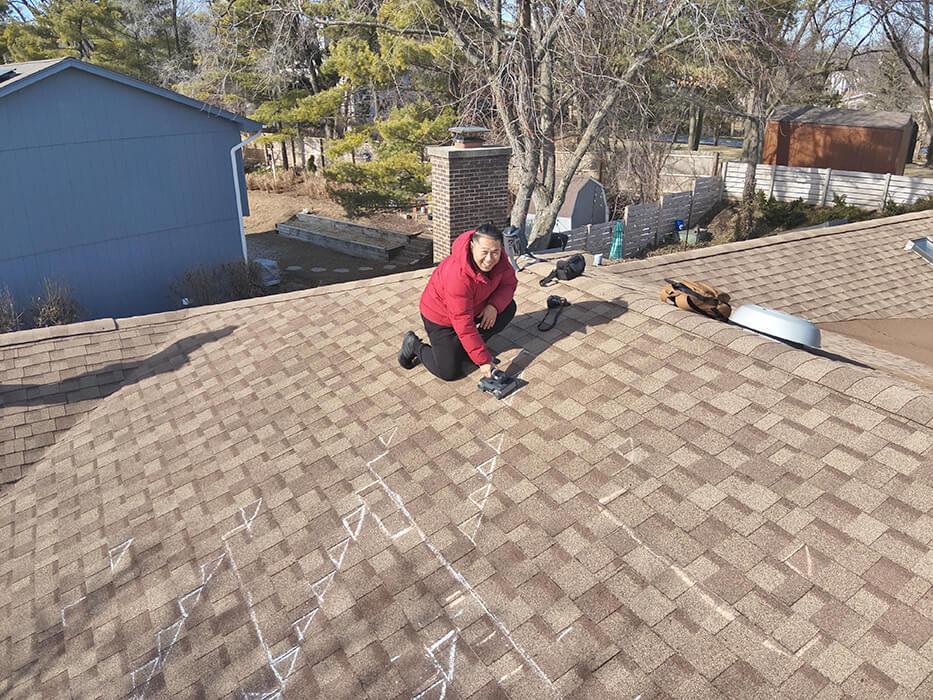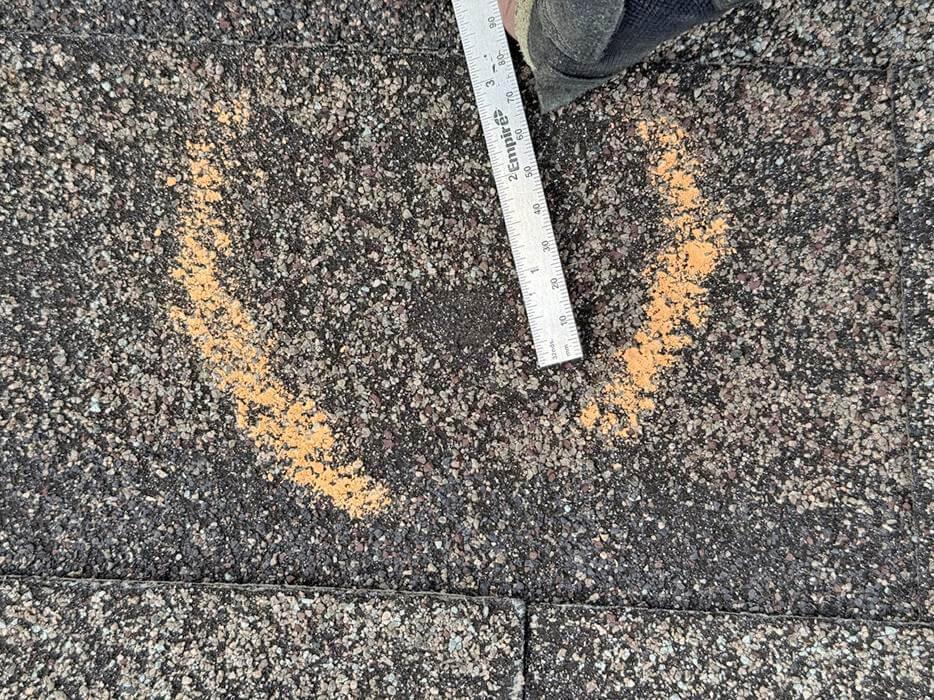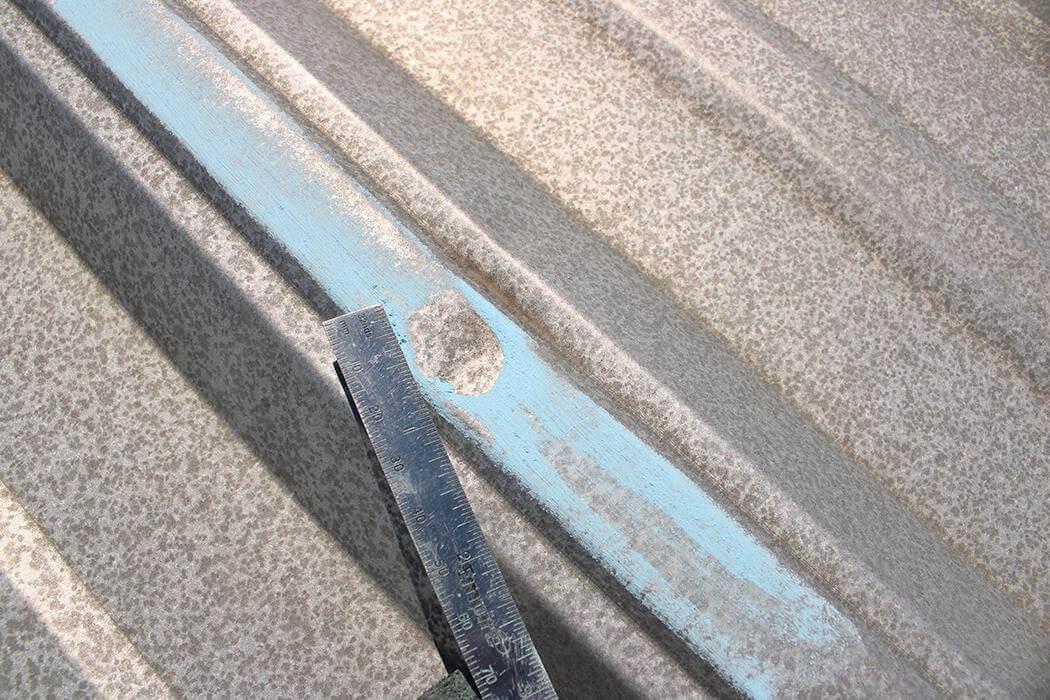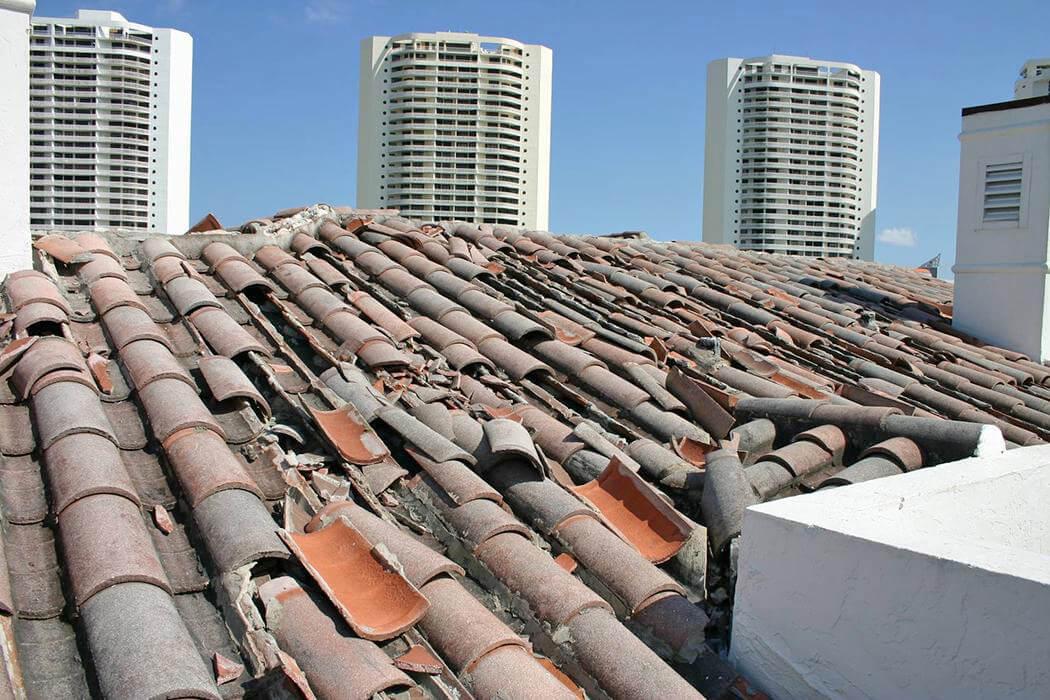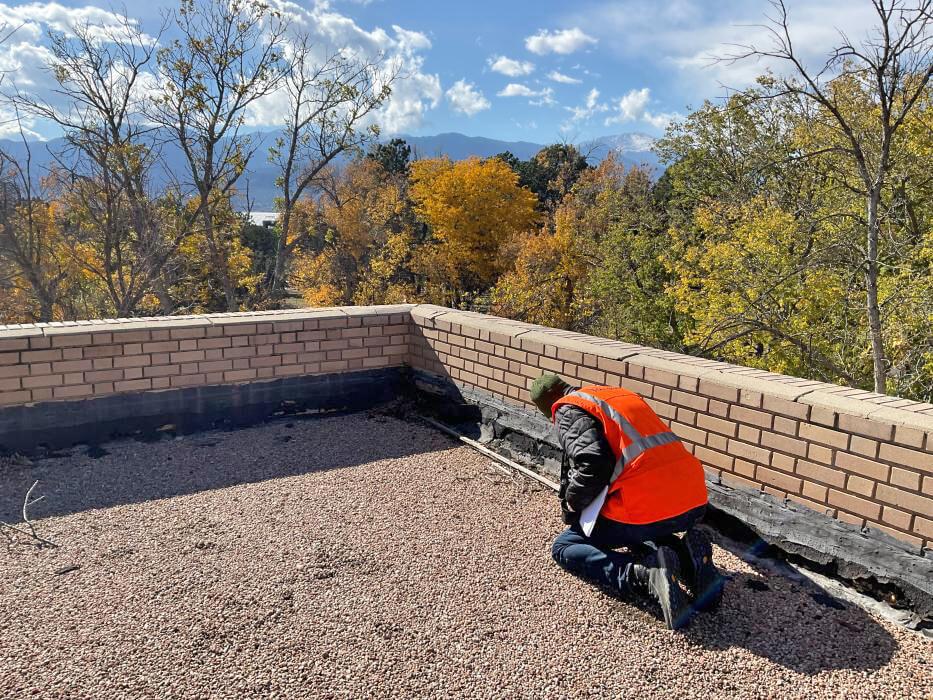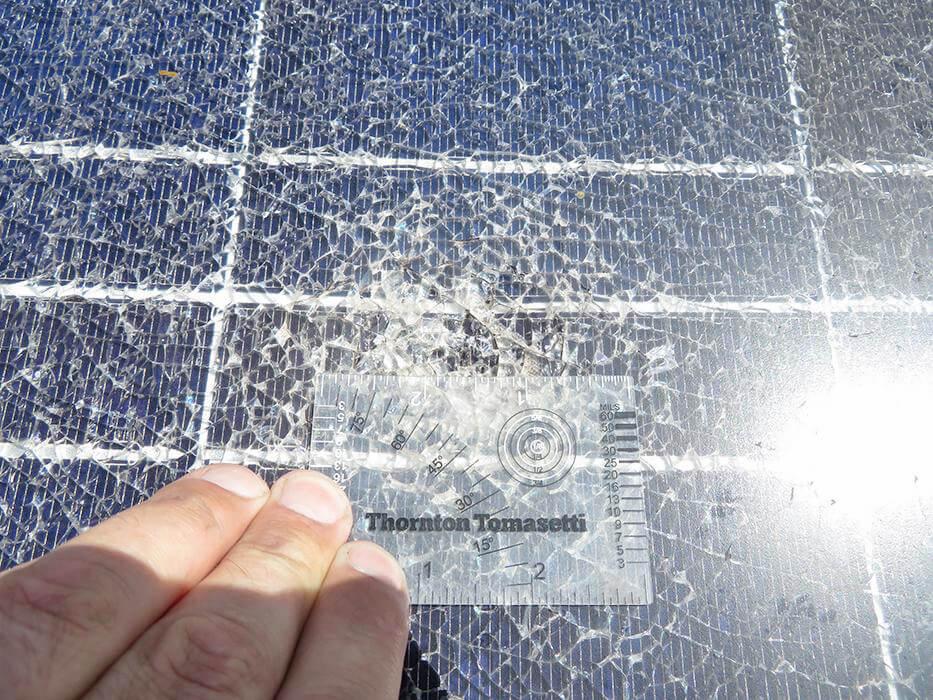How Hail Affects Roofing Materials: Forensic Assessment & Resilient Repair Strategies
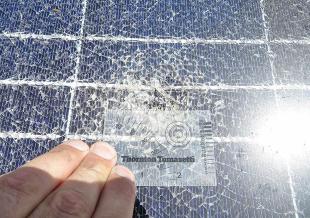 Thornton Tomasetti
Thornton Tomasetti
Key Takeaways
- Hail damage impact. Hailstorms cause billions of dollars' worth of property damage annually, with roofing systems being the most vulnerable, leading to issues like leaks, structural deterioration and reduced lifespan.
- Material vulnerabilities. Different roofing types face unique risks from hail, such as cracking, denting or puncturing, which can compromise waterproofing and require specialized repairs.
- Resilience strategies. Using impact-resistant materials, conducting regular maintenance and performing prompt post-storm inspections can significantly reduce hail damage and extend roof longevity.
- Forensic importance. Advanced forensic tools like drone imaging and 3D modeling help uncover hidden damage, ensuring accurate repairs and supporting insurance claims for cost-effective recovery.
Hailstorms pose a significant threat to buildings, causing billions of dollars' worth of property damage annually across the U.S., with roofing systems often suffering the most severe impacts.
At Thornton Tomasetti, our hailstorm damage forensics team investigates hail damage, assesses structural and envelope integrity and delivers resilient solutions for property owners, insurers and facility managers. By analyzing how hail affects various roofing materials – from asphalt shingles to solar panels – we help clients mitigate risks, ensure compliance and plan cost-effective repairs.
This post explores the unique vulnerabilities of common roofing types, drawing on our forensic investigations to offer actionable insights for protecting your assets.
Asphalt Shingles: Affordable but Vulnerable
Asphalt shingles, a staple in residential and low-rise commercial buildings due to their cost-effectiveness and versatility, are highly susceptible to hail damage. Hailstones, ranging from pea-sized to golf ball-sized, can cause granule loss, cracking or bruising, which compromises the shingles’ waterproofing layer and accelerates deterioration. Hail-induced fractures in asphalt shingles can lead to water infiltration, threatening interior systems. Granule loss also exposes the underlying asphalt to UV degradation, reducing the roof's lifespan.
- Damage signs. Look for dark spots (bruising), granule piles in gutters or soft spots when walking on the roof.
- Resilience tip. Opt for impact-resistant shingles (Class 4 per UL 2218 standards) to enhance durability in hail-prone regions like the Midwest or Texas. Regular post-storm inspections can catch damage early, preventing costly leaks.
- Our approach. Using advanced imaging and material testing, we quantify damage and recommend repairs.
Metal Roofing: Tough but Not Impervious
Metal roofing, including aluminum, steel or copper, is prized for its durability and longevity, often lasting 40 to 70 years. However, hail can dent panels, scratch protective coatings or loosen seams, potentially leading to corrosion or leaks. For example, golf ball-sized hail could cause cosmetic dents on a standing-seam metal roof, but forensic analysis might confirm no structural compromise. Severe impacts, however, can deform seams, requiring targeted repairs to maintain weatherproofing.
- Damage signs. Check for dents, scratches exposing bare metal or misaligned seams post-storm.
- Resilience tip. Choose thicker-gauge metals (e.g., 24-gauge steel) or high-impact coatings and ensure proper seam installation. Post-storm inspections by forensic experts can prevent long-term corrosion.
- Our approach. We combine 3D modeling with material stress analysis to assess damage, ensuring repairs align with building codes and client needs.
Tile Roofing: Elegant yet Fragile
Clay and concrete tiles, common in historic or high-end buildings, offer aesthetic appeal but are brittle under hail impact. Hailstones can crack, chip or shatter tiles, compromising the roof’s waterproofing and requiring meticulous repairs to preserve heritage. Hail-induced tile fractures can necessitate material matching to maintain architectural integrity.
- Damage signs. Look for cracked or displaced tiles, debris on the ground or exposed underlayment.
- Resilience tip. Install high-impact-rated tiles (e.g., ASTM D3161 Class F) and robust underlayment to minimize damage. Regular maintenance ensures tiles remain secure.
- Our approach. Our multidisciplinary team, blending structural and envelope expertise, uses forensic analysis to assess damage and recommend preservation-focused repairs, ensuring compliance with historic standards.
Flat Roofing Systems: Commercial Challenges
Flat roofing systems, such as TPO, EPDM or built-up roofing, are prevalent in commercial and industrial buildings but face unique hail vulnerabilities. Hail can puncture membranes, crush insulation or cause delamination, leading to leaks or reduced thermal performance. For example, hail punctures in a TPO roof can compromise insulation and cause water pooling. Such damage, if undetected, can lead to structural deterioration.
- Damage signs. Watch for punctures, tears, water pooling or insulation compression.
- Resilience tip. Use impact-resistant membranes (e.g., thicker TPO) and schedule regular inspections, especially after severe storms. Adding protective ballast can enhance durability.
- Our approach. We employ drone imaging and moisture mapping to detect hidden damage, delivering precise repair plans.
Solar Panel Roofing: Protecting Renewable Investments
As solar adoption grows, hail damage to photovoltaic panels is an emerging concern. Hail can crack glass surfaces, reduce panel efficiency or damage mounting systems. This necessitates analyzing cracked cells and compromised mounts, followed by repairs to restore both energy output and structural safety.
- Damage signs. Look for cracked glass, reduced power output or loose mounting hardware.
- Resilience tip. Install hail-rated panels (e.g., IEC 61215 certified) and reinforce mounting systems with impact-resistant designs. Post-storm forensic assessments ensure long-term performance.
- Our approach. We integrate structural and material analysis to assess solar-energy system damage, providing recommendations that align with sustainability goals, as demonstrated in our renewable-energy facility investigations.
Why Hail Forensics Matters
Hail damage extends beyond surface issues, potentially compromising structural integrity, leading to leaks or triggering costly insurance claims. Our hail forensics team, which performs more than 100 investigations annually, uses advanced tools like 3D impact modeling, drone surveys and material testing to uncover hidden damage and recommend resilient solutions. By addressing both immediate repairs and long-term resilience, we align with Thornton Tomasetti’s commitment to solving real problems through collaboration.
Actionable Steps for Property Owners
- Inspect promptly. Schedule forensic assessments within days of a hailstorm to catch damage early and prevent water infiltration.
- Choose resilient materials. Invest in impact-resistant roofing (e.g., Class 4 shingles, reinforced TPO) to reduce risk in hail-prone areas.
- Document for claims. Partner with forensic experts to produce detailed reports for insurance claims, ensuring fair compensation.
- Plan for resilience. Incorporate hail-resistant designs and regular maintenance to extend roof lifespans and meet ESG goals.
Hailstorms present significant challenges to various roofing systems, each of which exhibits distinct vulnerabilities. Asphalt shingles suffer from granule loss and cracking, which can lead to water infiltration and reduced lifespans. Metal roofing, while durable, is prone to dents and seam damage that may cause corrosion if untreated. Tile roofing, valued for its aesthetic, is susceptible to cracking and chipping, requiring careful repairs to maintain integrity. Flat roofing systems, common in commercial settings, face risks of punctures and insulation damage, potentially leading to leaks and structural issues. Solar panels, an increasingly popular roofing addition, can experience cracked glass and reduced efficiency from hail impacts.
Understanding these vulnerabilities, executing timely inspections and forensic assessments, and employing resilient materials can help property owners mitigate damage and extend the lifespans of their roofing systems. Our passion for innovation and multidisciplinary collaboration – spanning structural, envelope and forensic expertise – ensures tailored solutions that withstand the toughest storms. Whether you manage a historic landmark, commercial complex or solar-equipped facility, our team is ready to help.
Contact our hailstorm forensics specialists for a comprehensive damage assessment

